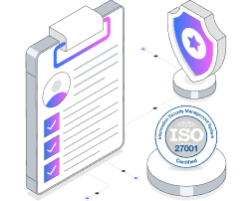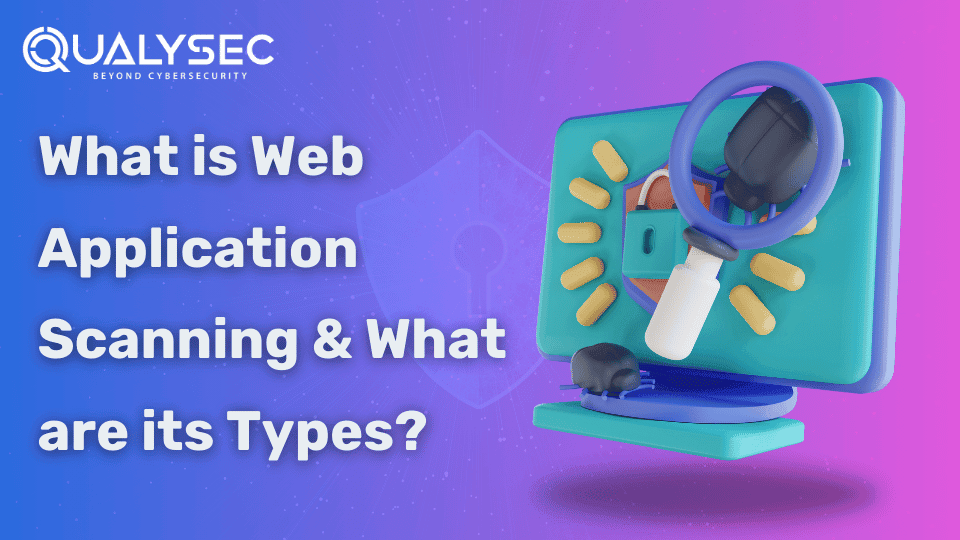What is Web Application Scanning & What are its Types?
Web application scanning is an automated process that identifies security vulnerabilities in web applications before attackers exploit them. In 2025, with the increasing reliance on digital platforms, cyber threats are more sophisticated than ever. Web application security flaws like SQL injection, cross-site scripting (XSS), misconfigurations, and zero-day vulnerabilities can lead to data breaches, financial loss, and regulatory penalties. Modern web application scanners now incorporate AI and machine learning to detect emerging threats faster and with higher accuracy. These tools not only identify vulnerabilities but also provide risk-based prioritization, helping businesses focus on fixing the most critical issues first. Regular scanning is essential before launching a web application and should be conducted periodically to keep up with new threats. Businesses that integrate web application scanning into their security strategy significantly reduce the risk of cyberattacks, ensuring compliance with industry standards like OWASP, GDPR, and PCI-DSS. What does Web Application Scanning Do? Web application scanning is a process that checks web-based applications to understand their security strengths and weaknesses, helping to reduce risks. Here’s what it does: 1. Identifies Vulnerabilities During a scan, web application scanning uncovers weaknesses that could harm the application. These vulnerabilities include: SQL Injection: Attackers manipulate database queries to access or destroy data. Cross-Site Scripting (XSS): Malicious scripts are injected into websites to steal user information or hijack sessions. Insecure Configurations: Poorly set-up systems leave apps exposed. Outdated Software: Unpatched systems are easy targets for exploits. New in 2025: Scanning tools now also flag vulnerabilities tied to AI-powered features (like insecure API integrations) and zero-day exploits, which have spiked with the rise of sophisticated hacking tools this year. 2. Simulates Attacks Automated scanning tools mimic real-world attacks to see how hackers or cybercriminals could exploit weaknesses. This shows how the app holds up under pressure and helps developers figure out fixes to strengthen security. Update for 2025: Modern tools now simulate ransomware injection and supply chain attacks, reflecting the top threats reported in cybersecurity reports this year. 3. Provides Detailed Reports After running attack simulations, the tools generate clear reports on the app’s security status. These reports typically include: A description of each vulnerability. Severity levels (e.g., low, medium, critical). Recommendations to fix the issues. 2025 Addition: Reports now often include real-time threat intelligence, showing how vulnerabilities align with active exploits circulating online, based on data from platforms like X and dark web monitoring. 4. Helps Ensure Compliance Many industries must meet strict regulations like GDPR, PCI DSS, or ISO 27001, which require regular security checks. Web application scanning ensures businesses stay compliant by identifying and addressing risks. 2025 Update: With new laws like the EU Cyber Resilience Act (effective late 2024), scanning now also verifies compliance for IoT-connected apps and mandates faster patching timelines, which businesses are scrambling to meet this year. 5. Supports Continuous Security As vulnerabilities keep growing, so does the need to protect web apps. Regular scanning keeps security up to date against evolving threats. What’s New in 2025: The rise of automated bot attacks and deepfake-driven phishing (noted in recent X posts and security blogs) has made continuous scanning critical, with tools now offering daily scans and integration with DevOps pipelines to catch issues faster. Explore our latest guide on Web Application Penetration Testing to stay ahead of vulnerabilities. Latest Penetration Testing Report Download The Benefits of Web Application Scanning Web application scanning remains one of the most effective methods for identifying security risks before they become serious threats. As cyber threats continue to evolve in 2025, this process has become more critical than ever. Here are the key benefits: Benefit Description Early Detection of Vulnerabilities Scans applications for security flaws before hackers can exploit them, preventing data breaches and cyberattacks. Modern scanners now integrate AI-driven threat intelligence for more accurate detection. Cost-Effective Security Fixing vulnerabilities in the early development stage is far cheaper than dealing with a security breach. Automated scanning tools now reduce manual effort, making security more efficient and cost-effective. Enhanced Security Posture Continuous scanning helps maintain a strong security framework, reducing the risk of zero-day attacks and new exploit techniques. It also ensures businesses stay ahead of evolving threats. Compliance with Regulations Web application scanning helps businesses comply with updated 2025 security regulations such as GDPR, SOC 2, HIPAA, PCI-DSS, and the new ISO/IEC 27001:2025 framework, which emphasizes proactive security measures. Protection of Sensitive Data With increasing cyber threats targeting customer data, regular scanning identifies and patches vulnerabilities that could expose personal, financial, and proprietary business information. In 2025, the focus is also on API security, as modern applications rely heavily on interconnected services. Want to secure your web applications from evolving security threats? Qualysec Technologies provides industry-leading web application scanning, ensuring your business stays protected. Click below to protect your applications today! Talk to our Cybersecurity Expert to discuss your specific needs and how we can help your business. Schedule a Call The Challenges for Web Application Scanning Web application scanning is a key step for organizations to strengthen their security, but it’s not without hurdles. Here are the challenges it faces: False Positives and Negatives: Scanners can misidentify vulnerabilities, flagging harmless issues as threats or missing real dangers. This leads to unreliable reports and unresolved risks. New AI-driven scanners are reducing false positives, but they still struggle with context-aware threats like subtle logic flaws, according to recent cybersecurity discussions on X. Complex Web Applications: Web apps keep getting more dynamic and intricate, making it tough for scanners to spot every weakness. The rise of serverless architectures and microservices has added layers of complexity, with scanners often missing vulnerabilities spread across distributed systems. Performance Impact: Scanning can slow down a web app, disrupting users and business operations. With more apps now hosted on cloud platforms, aggressive scans can also trigger cost spikes in pay-as-you-go environments, a growing concern for companies this year. Frequent Updates: Web apps change often, requiring constant rescanning. This takes time and resources, which can be




